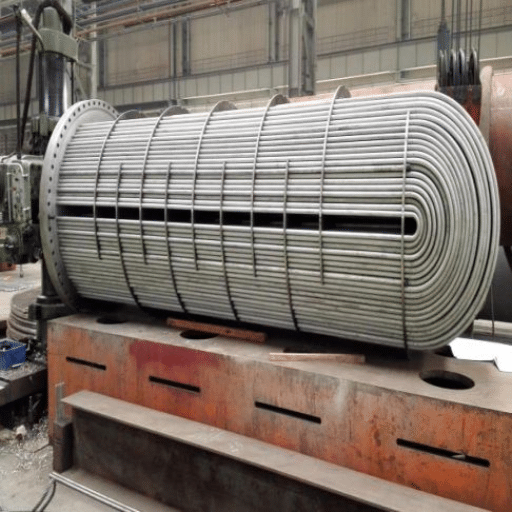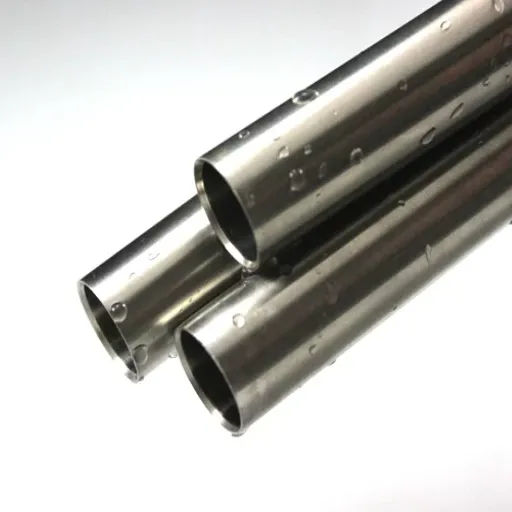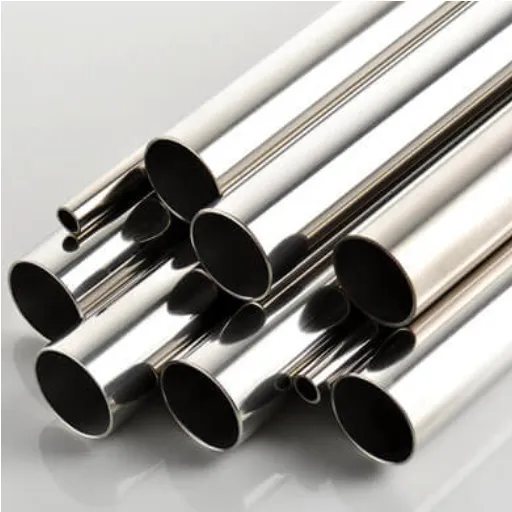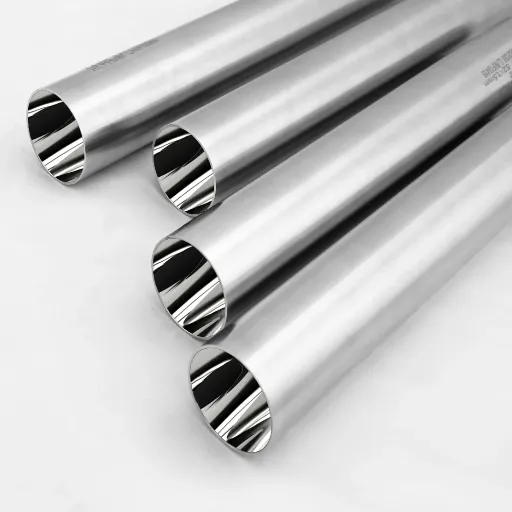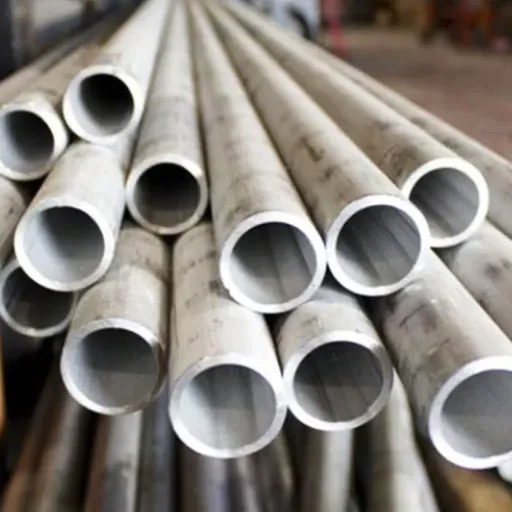Safety and health are always primary concerns in any kitchen when deciding on cookware. Among the multitude of choices available, stainless steel is one of the most recognized and durable options that even professional chefs and home cooks trust. However, the question of metal leaching from cookware, particularly stainless steel, constantly crops up and sparks debates about its safety. Does stainless steel really leach harmful substances into your food? If yes, under what conditions does it happen and how can it be avoided? This article goes extensively into the science of metal leaching, giving you clarity and reliable information meant to aid in making informed kitchen and health decisions.
Introduction to Stainless Steel Cookware

Stainless steel cookware is suitable for everyday cooking and will not release any harmful substances under normal conditions. This is because the material has very good corrosion resistance and is made from a combination of iron, chromium, and other elements that provide a strong, non-reactive surface. In most cases, very small leaching occurs, such as the presence of minute amounts of nickel or chromium, which usually takes place only in extreme conditions, like cooking very acidic foods for a long time or using damaged cookware. To reduce risks, use high-quality stainless steel cookware, do not store acidic foods for long periods, and discard cookware that is too worn out or damaged.
Quick Fact: Stainless steel cookware is non-reactive and maintains food quality without altering taste or nutritional value under normal cooking conditions.
What is Stainless Steel?
Stainless steel is a flexible alloy made up of the main components iron, carbon, and at least 10.5% chromium, recognized for its superb corrosion and rust resistance. Chromium addition leads to the formation of a thin, protective oxide layer on the surface, which acts as a barrier against moisture and other factors that could cause deterioration. Depending on the grade, nickel, molybdenum, silicon, or manganese can be used as additional elements to further strengthen the material, making it more durable and suited for particular areas of performance.
Its outstanding qualities have made stainless steel popular in various industries, such as household items, medical equipment, construction, and automotive parts, due to its resistance to wear, attractive look, and cleanliness. Moreover, it can be recycled, which adds to its status as an eco-friendly material choice.
Common Uses of Stainless Steel in Cookware
The main reason why stainless steel is highly regarded as a cookware material is its high durability, resistance to rust, and ability to withstand very high temperatures. The following are five main uses of stainless steel in the production of kitchenware:
Pots and Pans
High-quality stainless steel pots and pans are widely popular for their excellent heat distribution. They often have multiple layers, with aluminum or copper cores to enhance heat conductivity.
Saucepans
Steel saucepans are the right choice for cooking sauces, soups, and other liquid food dishes. They are non-reactive, meaning the taste or properties of acidic ingredients won’t be changed.
Bakeware
Stainless steel bakeware, such as baking sheets, roasting pans, and cake molds, is valued for its sturdy construction and resistance to warping at high temperatures.
Utensils and Serving Ware
Stainless steel utensils like ladles, spatulas, and tongs, as well as serving items including trays and bowls, are preferred for their cleanliness and aesthetic appeal.
Pressure Cookers
Stainless steel pressure cookers are reliable cookware in many households. They last, provide good pressurizing, help cook faster while keeping food nutritious.
Benefits of Using Stainless Steel
✨ Key Advantages
🛡️ Durability
Stainless steel material is the most durable among others, resistant to corrosion, rust, and staining that come with time. Given its strength, it is excellent for long-term use in severe environments such as constant water and heat exposure.
🧼 Low Maintenance
You won’t experience any difficulties cleaning stainless steel as it doesn’t call for special care. Its non-porous surface acts as a barrier against bacteria and dirt, staying clean and hygienic with very little effort.
🔄 Versatility
Stainless steel is a tough, flexible material commonly used in the medical field, construction, and for cookware and cutlery. Its flexibility makes it invaluable to different industries.
♻️ Eco-Friendly
Stainless steel is a planet-friendly material since it can be recycled 100% with no loss in quality. More than half, about 60%, of stainless steel production is from recycled materials.
✨ Aesthetic Appeal
Stainless steel gives a very modern and smooth look, contributing greatly to making products attractive and stylish. Its classic look is one of the main reasons why it’s a popular choice for both practical and decorative items.
Understanding Metal Leaching

Metal leaching is the term used to describe the process of metals being dissolved and released into the environment, which usually happens from products, waste materials, or natural deposits. This process can take place in certain situations, like when there is an acidic environment, high temperatures, or prolonged water contact. Metal leaching has large-scale impacts on the environment and health, as it contaminates soil, water, and ecosystems.
What is Metal Leaching?
Metal leaching is a term used to describe the gradual transport of metals, either from natural deposits or as a result of human activities, from solid substances into adjacent environments like soil or water through dissolution. This can occur through facilitation of various factors such as chemical reactions, adjustment of pH levels, or prolonged contact with moisture. Though leaching is most commonly associated with mining, industrial processes, and incorrect disposal of wastes, it permits the movement of toxic metals like lead, arsenic, cadmium, and mercury into groundwater or ecosystems, thus causing significant environmental and health risks.
Common Metals That Leach and Their Impacts
Understanding which metals commonly leach and their potential health impacts is crucial for making informed decisions about cookware and water safety. Here are five common metals that leach and their associated risks:
⚠️ Important Note: Initiatives to reduce metal leaching include tighter industrial regulations, using non-corrosive materials, and implementing advanced filtration systems to prevent water source contamination. Periodic testing and environmental health monitoring are necessary to manage metal leaching risks.
Factors Influencing Metal Leaching in Cookware
The degree of metal leaching from cookware to food is affected by numerous factors. Understanding these factors is vital to reducing health hazards and ensuring safe use of cookware. Here are five essential factors:
-
1. Type of Metal or Coating Used
The cookware’s material is the main contributor to the metal leaching process. For instance, aluminum, stainless steel, and cast iron are common materials, while non-stick coatings or combinations will dictate the amount of metal released. Uncoated aluminum cookware is more likely to transfer aluminum into food with acidic character.
-
2. Cooking Temperature
Metal leaching is influenced by the length and temperature of the cooking process. Studies have shown that heating stainless steel cookware to very high temperatures will cause metals, namely iron, nickel, and chromium, to move into the food.
-
3. pH Level of Food
Acidic foods, such as tomato-based dishes, citrus, or vinegar-based recipes, enhance metal leaching. The reactivity between such foods and cookware causes dissolving of metal particles into the meal.
-
4. Duration of Cooking Time
Taking more time to cook means food gets more exposure to the cookware surface, consequently increasing potential for metal leaching. Slow-cooked dishes or foods simmered for hours are more likely to contain higher metal traces than quickly prepared meals.
-
5. Condition and Age of Cookware
Wear and tear of cookware can contribute significantly to metal leaching. Scratched, damaged, or corroded surfaces allow greater metal release than well-maintained or newer cookware. Chipped non-stick coatings can expose underlying metal, increasing contamination risk.
Leaching from Stainless Steel: What You Need to Know
Stainless steel is unavoidably one of the main materials in cookware due to its durability, rust resistance, and attractive appearance. Nevertheless, it can still leach small amounts of metals into food depending upon specific conditions. Here are five major points you should know about stainless steel leaching:
⚗️ Nickel and Chromium Leakage
Nickel and chromium are present in stainless steel and leach into food, mainly if you cook with acids or salts. Leaching may be intensified if food is cooked or stored in stainless steel cookware for longer periods.
🔬 Type of Stainless Steel
Stainless steel has different compositions according to its grade. The 18/10 stainless steel (18% chromium and 10% nickel) is the highest grade and least leachable, while low-grade or less pure forms easily release metals into foods.
🔥 Proper Cooking Conditions
High temperature and acidic ingredients like tomato sauce or vinegar will make leaching worse. To avoid such problems, use stainless steel cookware according to its limits.
🛠️ Cookware Age and Maintenance
Old, scratched, or otherwise damaged stainless steel cookware will leak more than new ones. Proper care and cleaning—avoiding very harsh cleaners or tools—ensures cookware lasts safely longer.
📊 Research Results on Metal Release
Some research points to the fact that nickel and chromium leakage is still considered safe for the vast majority of people. However, those who are sensitive may prefer avoiding even the tiniest amounts which otherwise might trigger reactions.
✅ Key Takeaway: By being aware of these factors, health risks related to stainless steel cookware can be minimized, and you can select and use stainless steel cookware wisely.
Nickel and Chromium in Stainless Steel
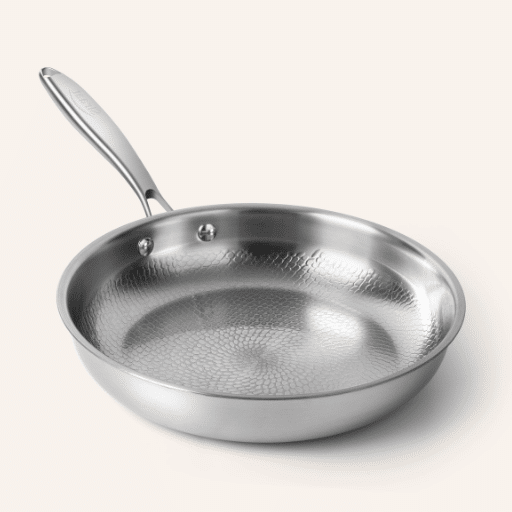
The prime elements in stainless steel are nickel and chromium, together forming the basis of its resistance to rust, durability, and practical usage in various sectors. Here are the most important details and data points concerning nickel and chromium in stainless steel:
💎 Nickel Content
The main role of nickel in stainless steel is to offer a nice, shiny surface along with the primary function of improving the alloy’s resistance to corrosion.
📊 Data: The 304 stainless steel, a common type, has nickel composition in the range of 8-10.5%. Marine and medical applications requiring extreme conditions usually use higher nickel-content stainless steel.
✨ Chromium Content
The presence of chromium in stainless steel is the reason it can develop a layer of oxide that protects it from rust and corrosion.
📊 Data: Chromium is present in all types of stainless steel with a minimum content of 10.5%, and certain varieties contain more than 20%.
⚗️ Release of Metals
Stainless steel can release small quantities of nickel and chromium ions, mainly when subjected to acidic or high-temperature conditions.
📊 Data: According to surveys, the release of these metals from well-kept stainless steel cookware is so minimal that it is practically safe for most people.
🏥 Health Considerations
Chromium is a trace mineral necessary for human health, while nickel might be toxic if ingested in large amounts, especially dangerous for sensitive individuals.
💡 Tip: People sensitive to nickel can choose stainless steel grades with lower nickel content, such as grade 430 (ferritic stainless steel).
🔧 Applications and Durability
The resistance that nickel and chromium provide together has made stainless steel a material of choice in many industries from kitchenware and medical devices to buildings and automotive parts.
📊 Data: The higher the nickel and chromium content of a grade, the more resistance to extreme conditions it provides, thus prolonging the material’s lifetime.
The Role of Nickel and Chromium in Stainless Steel
Nickel and chromium are two metals essential to stainless steel that determine its properties and performance. The following are five crucial points highlighting their significance:
Can Stainless Steel Leach Nickel and Chromium?
Indeed, under certain conditions, stainless steel is capable of releasing very small amounts of nickel and chromium. Recent studies and data have determined that the leaching risk is dependent on several factors, including the specific type of stainless steel, the presence of acidic or saline environments, the duration of liquid contact, and high temperatures. To illustrate, stainless steel grades with more nickel in them like 304 and 316, are most prone to releasing minute amounts of nickel when subjected to acidic things like vinegar or citrus juice.
Likewise, chromium may also leach out in very small quantities, especially near the end of the first use or in extreme conditions such as boiling. Nevertheless, the release of nickel and chromium is usually so small that it is regarded as negligible and thus well within the safety limits for human dietary exposure set by health organizations including EFSA (European Food Safety Authority) and FDA (U.S. Food and Drug Administration).
🔬 Scientific Conclusion: For the majority of people, the amounts of nickel and chromium leached from stainless steel kitchenware or cutlery are not a cause for any significant health risk. Allergy or sensitivity patients may choose to use low-nickel grades for less exposure. In general, stainless steel is still one of the safest and most durable materials for various applications.
Impact of Cooking Conditions on Metal Leaching
The cooking conditions of food can greatly determine the amount of metal leaching from stainless steel cookware. There are several factors that account for this, and if one knows them it is easier to address concerns. The following are five main factors that can influence metal leaching:
🌡️ Temperature
If the cooking temperature is higher then the chance for metal leaching occurs more often since heat speeds up the reaction between the metal surface and acidic or salty food.
Example: Boiling acidic liquids over 100°C can result in the release of nickel and chromium in higher amounts.
⏱️ Cooking Time
A long cooking time allows for more time for the food to be in contact with the cookware surface; hence, the probability of the food getting metal ions from the cookware is increased.
🍋 Acidity of Food
Acidic foods such as tomatoes, vinegar, and citrus juices cause a need for higher leaching levels.
Research Finding: Foods with pH less than 4 are most likely to react with stainless steel surfaces.
🧂 Salinity
Metal ion leaching can be promoted by the presence of high salt content in food or cooking water as it acts like an electrolyte supporting corrosion. This is seen in heavily salted broths or marinades where food is more exposed to this interaction.
🔧 Condition of Cookware
The condition of stainless steel cookware is another factor affecting leaching. If the cookware is scratched or worn or the protective layer is damaged, it can lead to the underlying metal being exposed thus during cooking leaching can happen. The risk of this happening is reduced when the cookware is cleaned and handled properly over a period of time.
🎯 Consumer Action: Consumers can reduce the amount of metal leaching through prudent management of these factors and at the same time enjoy the long-lasting and safe use of stainless steel cookware.
Comparing Stainless Steel to Other Cookware Materials

Stainless steel cookware is durable, non-reactive, and versatile, but lacks the nonstick properties of other materials. Understanding how it compares to other cookware types helps you make informed purchasing decisions.
Comprehensive Cookware Comparison
Stainless Steel vs. Cast Iron
Stainless steel is lightweight, non-reactive, and versatile, while cast iron excels in heat retention and durability.
Stainless Steel vs. Non-Stick Cookware
Stainless steel is durable and ideal for high-heat cooking, while nonstick offers easy food release and is better for delicate dishes.
Safety Considerations of Different Materials
Safety concerns regarding cookware are the most important aspect, besides many factors, including cooking results and health. Different materials have properties of their own that can affect them in different ways. Below are five major safety factors one should always consider:
☠️ Toxicity and Coatings
Nonstick pans are usually made with PTFE or Teflon material and they may produce toxic fumes at high heat. If you are cooking often at high temperatures, it is better to look for PTFE-free pots and pans to avoid such risks.
⚗️ Leaching Metals
Aluminum or copper are some materials whose metals can leach into food, especially when used with acidic substances like tomatoes or citrus. Stainless steel or ceramic-coated cookware is an excellent choice as it leaches little or none at all.
🔪 Scratches and Wear
Nonstick pans lose their coating when scratched or worn, and that results in contaminating food as particles get mixed with meals. Nonstick cookware safety requires care and using non-metallic utensils.
🔥 Heat Stability
Some nonstick coatings and plastic parts easily break down with exposure to high temperature. They can be replaced with stainless steel and cast iron which have excellent heat stability allowing versatile and safe cooking.
🧪 Reactivity with Food
A reactive material, like uncoated aluminum, can change both the taste and safety aspect of certain dishes because of chemical reactions. Non-reactive materials like stainless steel or enameled cast iron should be used in cooking a diverse range of food.
✅ Safety First: By being aware of such safety issues you are able to cook healthier and at the same time take care of your cookware.
Minimizing Risks of Leaching

Reduction of harmful substances leaching into your food during cooking comes first by following best practices and making good choices regarding cookware materials. Here are five ways to leach less effectively:
-
1
Use High Quality Non-Toxic Cookware
It is always better to go for cookware made from non-reactive materials, for example, stainless steel, enameled cast iron, or ceramic. High-quality products are long-lasting and do not pose the risk of leaching toxic chemicals or metals.
-
2
Avoid Damaged or Worn Coatings
Cookware with non-stick coating that is worn or damaged can contribute to leaching. Therefore, you need to inspect your cookware regularly and if any has visible damage, discard or replace it.
-
3
Cook at Moderate Temperatures
Do not cook at very high temperatures since it may accelerate the process of leaching and chemical reactions for certain materials such as non-stick pans. Always set the heating level to medium or close to it.
-
4
Avoid Acidic Foods in Reactive Cookware
Prevent cooking acidic foods like tomatoes, citruses, or vinegar-based dishes in aluminum and uncoated cast iron. Acidic ingredients can provide a passage into food for certain metals and thus increase leaching.
-
5
Follow Manufacturer Guidelines
The manufacturer always provides care and usage instructions and you must follow them strictly. For instance, if the manufacturer recommends hand washing for specific cookware to prolong its usability, do so.
🎯 Result: Doing all these practices will not only make your cooking experience safer and healthier but also, your cookware will last longer.
Best Practices for Cooking with Stainless Steel
Professional chefs claim that bad techniques are the main reason why people avoid cooking with stainless steel and the reason why other cooks prefer to do so. In order to troubleshoot the sticking problem and get a good cooking experience with a stainless steel pan, here are some tips and tricks you can use:
👨🍳 Professional Cooking Tips
🔥 Preheat Your Cookware Properly
A preheated pan is essential for perfectly cooked food that doesn’t stick. When a pan is heated well, it distributes heat evenly. The best way to tell if it is hot is by sprinkling a few drops of water on the surface. If they bead and roll off, the pan is good to go.
💧 Use the Right Amount of Oil
The right amount of oil will make the road for your food and it won’t stick to the pan. To get the most out of it, heat the oil until it shimmers and only then add your ingredients.
🌡️ Avoid Cooking at Extremely High Temperatures
Medium and, in some cases, medium-high heat should be enough as stainless steel holds heat nicely. Cooking at very high temperatures can lead to food sticking and burning, besides the pan losing its shine quicker than expected.
🧽 Clean Using Gentle Methods
After cooking, let the pan cool and then clean it. To get residue off use warm water, mild detergent and a non-abrasive scrubbing pad. For hard stains baking soda and water mixture or a cleaner made for stainless steel can work wonders.
⚠️ Avoid Harsh Chemicals or Steel Wool
Using abrasive tools or chemicals may not only ruin the aesthetics of your stainless steel cookware but also its functionality by damaging or scratching the surface. It’s better to go for the gentle way to keep the shine.
Tips for Maintaining Stainless Steel Cookware
✅ Immediate Cleaning After Use
Promptly clean your stainless steel cookware right after each use to avoid food residue and staining. Discoloration can occur or cleaning might become more difficult if food particles or sauces are left on the surface for a long time.
🔥 Use Low to Medium Heat Settings
Stainless steel cookware is excellent in both heat conduction and retention. High heat settings are generally not needed and can easily result in sticking or burning of food which will lead to formation of tough stains. Low to medium heat may be sufficient for most recipes.
⚡ Heat the Skillet Before Adding Oil
To lessen the chance of sticking, it is always good practice to preheat your stainless steel skillet before adding oil or food. You may heat the pan slowly over medium heat. When it is hot enough, pour in a little oil and rotate it to cover the surface evenly.
💧 Dry Completely Before Storing
After washing the cookware, make sure it is completely dry before storing. Moisture left on the surface will lead to water spots forming, which will reduce the polished look of stainless steel. Use a soft, clean towel to dry it thoroughly right after washing.
✨ Polish Occasionally to Restore Shine
Eventually, the surface of your stainless steel cookware might lose its natural shine. To bring back its luster, stainless steel cleaner or polish can be used occasionally. With a soft cloth, apply the cleaner and buff to a glossy finish.
💡 Maintenance Benefit: If you follow these tips, you won’t just prevent your stainless steel cookware from getting worn out, but also extend its lifetime significantly.
Choosing High-Quality Stainless Steel Products
When selecting top-notch stainless steel kitchenware, always go for 18/10 stainless steel cookware since it gives the best hardness and at the same time, is resistant to rust and oxidation. Multi-ply or clad construction is another thing to look for since it guarantees heat is properly spread.
🔍 Key Features to Look For:
- 18/10 Grade Stainless Steel: Indicates 18% chromium and 10% nickel for optimal performance
- Multi-Ply Construction: Multiple layers ensure even heat distribution
- Ergonomic Handles: Comfortable and heat-resistant handles for safe handling
- Shiny Surface Finish: Indicates quality manufacturing and easier cleaning
- Stovetop Compatibility: Works on different types of stovetops, including induction
- Reputable Manufacturer: Choose acknowledged manufacturers with positive feedback to guarantee good quality and lasting use
References
- Oregon State University: Discusses how stainless steel leaches nickel and chromium into foods during cooking.
Visit Source → - Michigan State University Extension: Explores the safety of stainless steel and its resistance to corrosion and chemical leaching.
Visit Source → - Academia.edu: Examines stainless steel as a potential hazard due to metal leaching into beverages.
Visit Source →
Frequently Asked Questions (FAQ)
❓ Does stainless steel leach nickel and chromium into foods?
Yes, stainless steel may leach small amounts of nickel and chromium into foods during cooking, especially when cooking acidic foods like tomato sauce. The degree of leaching depends on factors such as the grade of stainless steel used, the cooking time, and the acidity of the food.
❓ What is the difference between 304 stainless steel and 316 stainless steel?
304 stainless steel is commonly used in cookware and has a lower nickel content compared to 316 stainless steel, which is more resistant to corrosion and leaching. 316 stainless steel contains molybdenum, making it ideal for more demanding food preparation tasks, especially with acidic foods.
❓ Can cooking with stainless steel pots and pans affect food safety?
Cooking with stainless steel pots and pans is generally considered safe. However, if you frequently cook acidic foods, it’s wise to monitor the cooking time and avoid prolonged exposure to prevent increased metal leaching.
❓ Is it safe to cook tomato sauce in a stainless steel pan?
Cooking tomato sauce in a stainless steel pan is safe, but you may experience some leaching of chromium and nickel, particularly if the cooking time is extended. Using high-quality stainless steel cookware can minimize these effects.
❓ How does the grade of stainless steel affect metal leaching?
The grade of stainless steel significantly affects metal leaching. Higher-grade stainless steel, such as 316 stainless, tends to leach fewer metals into food compared to lower grades like 304 stainless, especially when used with acidic foods.
❓ What are the potential health effects of nickel release from stainless steel?
For most people, the amounts of nickel released from stainless steel during cooking are not harmful. However, individuals with a nickel allergy may experience skin reactions or other health issues due to exposure, especially with prolonged use of stainless steel utensils.
❓ How long can you safely cook food in stainless steel cookware?
Safe cooking times in stainless steel cookware vary depending on the food type. Cooking acidic foods for short periods is less likely to cause significant metal leaching, while prolonged cooking cycles may increase the release of nickel and chromium.
❓ What should you consider for food safety when using stainless steel?
When using stainless steel for food preparation, consider the grade of stainless steel, the type of food being cooked, and the cooking time. Opt for high-quality stainless steel cookware to minimize the risk of metal leaching and ensure food safety.
❓ Does metal leaching from stainless steel contribute to heavy metals in food?
Metal leaching from stainless steel can contribute small amounts of nickel and chromium to food, but these levels are typically much lower than those associated with heavy metals. It’s essential to use high-quality cookware and be mindful of the types of foods being prepared.

